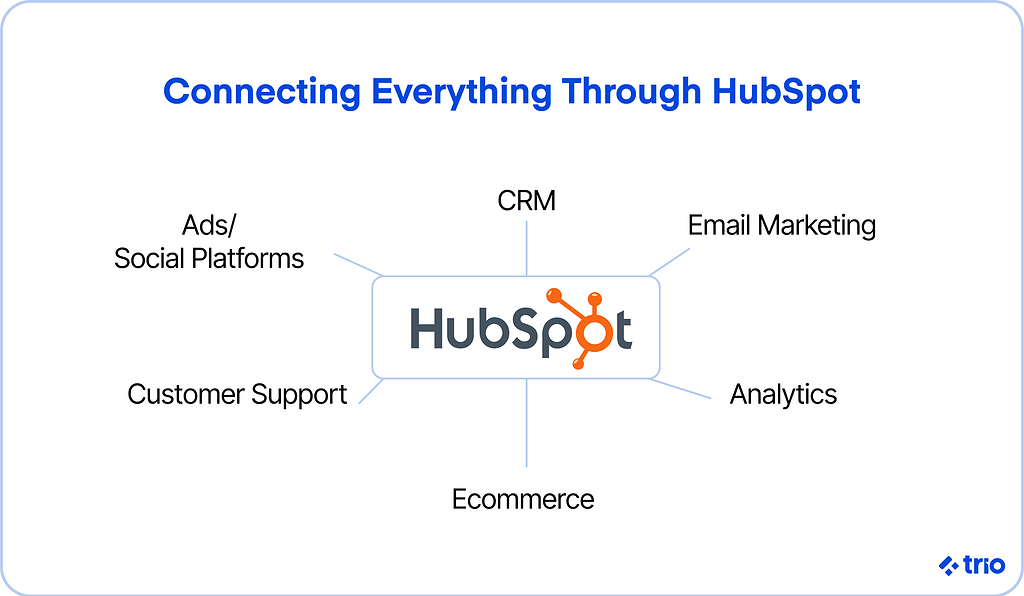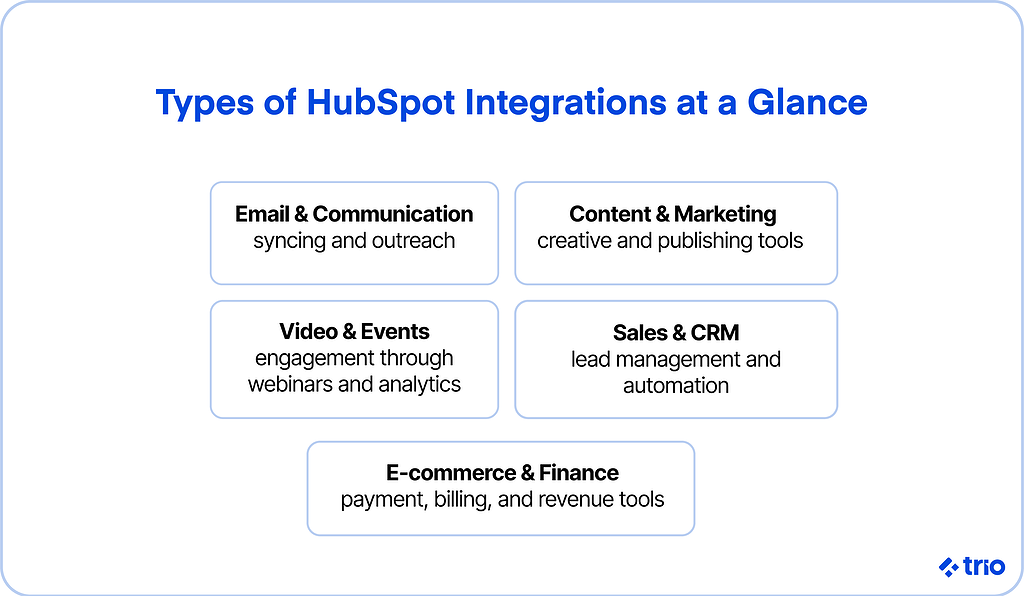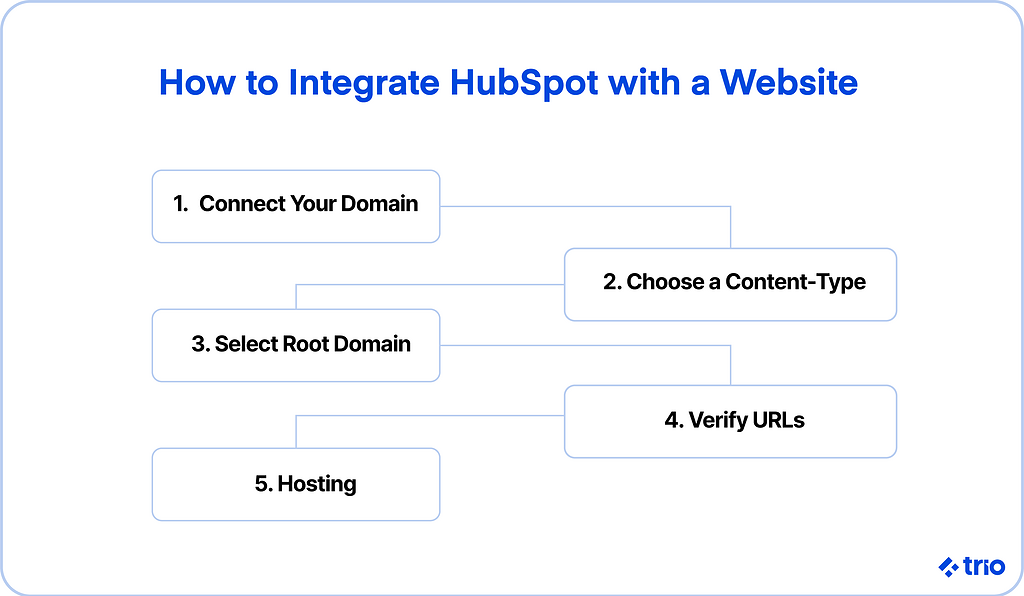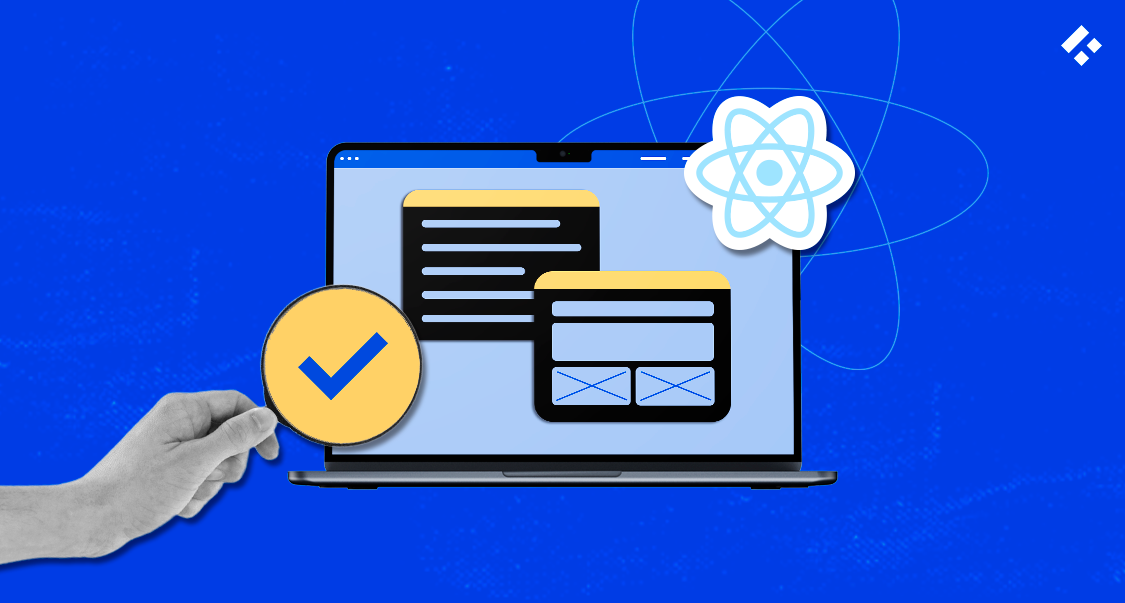In HubSpot, integrations enable data to be passed to and from external/internal systems, as well as the HubSpot COS.
Often, businesses are forced to use multiple applications simultaneously to serve a single purpose. HubSpot integrations aim to provide a unified solution by integrating these applications directly within its own software.
In 2025, with more than 184,000 people using HubSpot, integrations are what make the difference between a siloed tech stack and a streamlined growth engine.
This guide will help you become acquainted with the various ways to integrate your HubSpot website with other applications and explain why this is so important.
At Trio, we’ve worked with companies across industries to build and optimize HubSpot integrations.
If you are interested in hiring our expert developers, consider our outsourcing and staff augmentation hiring models to ensure you get the most cost-effective development possible.
Are you ready to start your development project?
We have the developers you need to take your development project in the right direction.
Companies are proven to grow their business faster with Trio.
What Are HubSpot Integrations?
HubSpot is a bona fide content optimization system (COS). This means it markets itself as a fully comprehensive inbound marketing tool, its principal features being a content management system (CMS) and customer relationship management (CRM) tool.
Essentially, because HubSpot’s goal is to provide the necessary tools for business managers to market their goods and services without any undue roadblocks, integrations play a significant role in supplying these tools.
For example, if you’re using HubSpot’s CRM, you may want to utilize your email contacts to create a funnel that engages consumers’ interest in your product.
To this effect, HubSpot allows you to integrate your website with your Gmail or Outlook inbox.
But email is just the beginning. HubSpot now supports thousands of integrations across marketing, sales, service, finance, and productivity.
You can find the essentials you need on the HubSpot App Marketplace. While no one knows exactly how many apps are featured in this marketplace, it’s safe to say there are quite a few.
You can integrate apps into your CMS that enable you to personalize forms or track metrics, for instance.
In general, HubSpot integrations have the ability to add extra nuance to your website and overall content marketing strategy.
At Trio, we’ve seen how the right integrations transform daily operations for our clients, eliminating double data entry, improving sales handoffs, and making marketing campaigns smarter. That’s why understanding the basics of integrations is the first step toward unlocking HubSpot’s full potential.

When Is It Necessary to Use HubSpot Integrations?
If your intention is to use every resource at your disposal to guarantee the success of your business, then HubSpot integrations are always necessary.
To elaborate, every product or service must be promoted using intentional marketing schemes.
Hosting content online, or otherwise, business blogging is a surefire way to attract customers to your business. Businesses that blog receive 67% more leads than those that don’t.
That said, writing content is just the first step.
You’ve probably read about the statistics a dozen times now regarding the short attention span of website visitors. Luckily, you’ve evaded the stat this time around. But the point still stands.
Considering how unlikely it is for one of your website visitors to stay interested in your content, you can predict it’s almost just as unlikely that they’ll follow through with buying your product or services – at least not on their first visit.
The previous example of a CRM integration demonstrated how HubSpot integrations can engage leads in the long term.
Here’s the real test: you need a HubSpot integration if your teams are struggling with any of the following:
- Your marketing automation and CRM don’t share data automatically.
- Your sales reps manually re-enter leads from one tool into another.
- Your support tickets live in a separate system, making it hard to see the whole customer journey.
- You run ecommerce, webinars, or events in third-party platforms but can’t track results in HubSpot.
This is why many, if not all, HubSpot integrations are made to enhance your CRM or refine your CMS.
While you want your content to be up to par, you still need to go above and beyond for other aspects of your website.
How to Do Integrations with the HubSpot API?
For reference, an API denotes an application programming interface.
In layman’s terms, APIs define how one software interacts with another. HubSpot integrations rely on HubSpot’s API, allowing HubSpot apps to interact properly with HubSpot itself.
HubSpot pays homage to developers by providing them with the tools to build a HubSpot app, a custom integration, or a HubSpot website.
Although HubSpot is designed for anyone to use, those who want to maximize their website’s potential tend to hire developers for assistance.
To do this, HubSpot developers have access to API documentation, allowing them to apply their expertise to the specific development profile of HubSpot software.
After setting up a developer account, developers can dive right into building custom solutions and growing their business.
Here’s a quick look at what this can involve:
- Authentication: HubSpot uses OAuth or API keys to enable secure communication between your system and theirs.
- Data access: You can use the API to fetch CRM records (contacts, deals, companies) or push new data into HubSpot.
- Workflow triggers: APIs enable you to connect HubSpot actions (such as “new contact created”) with external systems (like sending a Slack message).
For example, a simple GET request can retrieve all contacts from HubSpot:
GET https://api.hubapi.com/crm/v3/objects/contacts
Authorization: Bearer YOUR_ACCESS_TOKEN
This type of call enables you to synchronize HubSpot data with your internal databases, dashboards, or custom tools.
You may want to review these links if custom integrations interest you:
What Does HubSpot Integrate With? (Types of HubSpot Integrations)
There is a heaping pile of options available to you when it comes to HubSpot integrations. These integrations encompass categories such as marketing, sales, customer service, productivity, and finance.
Instead of going through each category and integration one by one, here are a few examples of how integrations can be helpful.

Email and Communication
As mentioned before, syncing HubSpot with an email system can be very advantageous to HubSpot customers. For some, it is at the heart of all their marketing and sales efforts.
Through data and analytics, you can increase leads by sending the right message at the right time. Seventh Sense is one HubSpot integration that enables this.
Content and Marketing
Although the example may seem vague, HubSpot integrations and content work seamlessly together. Of course, this is because HubSpot is a COS.
But if you don’t plan to use the COS to the extent of its capacity, you can opt to use HubSpot CRM and then integrate the tool with your WordPress website.
On the other hand, any content that you plan to put on your HubSpot website can be optimized with a diverse array of apps. Zerys, for one, lends you freelance writers to plan and write your content. This integration increased organic traffic for Spot On by 82%.
Naturally, other apps perform various tasks, such as multi-channel publishing, blog-to-ebook conversion, and even no-code page building.
Zerys, for instance, connects freelance writers for planning and content creation, and integrations like Canva or Design Wizard streamline content design workflows.
Video and Events
Wistia is a popular HubSpot integration that enables users to gain deeper insights into their customers through video analytics.
For marketers, data is inherently positive, as it gives insight into what works and what doesn’t.
Most HubSpot integrations for video are used to create videos. Video marketing has been found to be superbly effective.
In fact, videos are shared 12 times more than link and text posts combined. Webinars, in particular, provide customers with a unique perspective on the industry.
HubSpot integrates with Zoom and GoToWebinar, allowing you to automatically log registrants, attendance, and engagement data directly inside your CRM. This makes webinars and events measurable parts of your funnel.
Sales and CRM Alternatives
For businesses that prefer not to be overly dependent on HubSpot, many of HubSpot’s integrations serve as viable CRM alternatives, such as Salesforce and Copper.
Managing customer relationships is arguably the most critical part of marketing. You should leave customers with a positive impression of your customer service, regardless of the issue.
Branching out from the HubSpot CRM might get you certain features that you find crucial to your business operations, and HubSpot is flexible enough to get you what you need.

E-commerce and Finance
If you’re running an e-commerce, HubSpot integrates directly with Shopify, WooCommerce, and Stripe. This allows you to track revenue attribution, abandoned cart follow-ups, and customer lifetime value directly in HubSpot.
Finance tools like QuickBooks and Xero also integrate, helping align marketing and sales with revenue data.
5 Steps to Integrate HubSpot with a Website
So you’ve only just realized that HubSpot is the solution you need to grow your business, but you already have a pre-existing domain address?
Not a problem. HubSpot also offers a solution for this.

1. Connect Your Domain
From your HubSpot account, click on settings, then ‘CMS’, then ‘Domains & URLs’. Click ‘Connect a domain’. You should see four different options for the type of domain you want to connect. Choose the option that best fits and proceed to the next step.
2. Choose a Content-Type
Now, choose the content type you plan to host via the checkboxes. You can host multiple content types from the same domain.
3. Select Root Domain
You will be presented with a text box where you should enter your root domain. Your root domain will be your brand domain.
4. Verify URLs
There are four components to consider at this point. The first is the subdomains. These are connected to your brand domain with a similar but distinct web address. Think ‘about.domain.com’ or ‘contact.domain.com’.
Then there is your brand domain, which is the same as your root domain. The top-level domain is the ending of your domain address, like ‘.com’. Last, you must set up your primary language.
5. Hosting
Use a DNS provider to set up hosting. With GoDaddy, this can be automatic. Otherwise, you’ll have to do this manually. You can find more information here.
How to Integrate Apps with HubSpot?
Assuming you’re logged in to your HubSpot account, once you’ve found an app to your liking, you can connect apps to your HubSpot and start chiming in those HubSpot integrations.

1. Search
Find the app you want to install on the HubSpot App Marketplace.
You can filter out the apps that aren’t compatible with your plan by clicking ‘Compatible with my plan’ under ‘Compatible HubSpot Plans’.
2. Review
It’s probably best to give yourself a quick overview of what the app does.
Scroll downwards to see information related to the app’s features and compatibility requirements.
3. Pay
Just below ‘Requirements’, you’ll have the option to choose the pricing model you prefer. Many apps are free, and others have free and paid versions.
It’s up to you to decide what will be optimal for your business needs.
4. Approve
There might be some data and permissions to watch out for, which you can glimpse right below ‘Pricing’.
Make sure everything looks right here before moving on.
5. Connect
Finally, you can scroll back up top and press ‘Connect app’. Click ‘View setup guide’ to read more details on setting up the specific app you’re working with.
How to Hire a Developer for HubSpot Integration?
HubSpot is pretty new to the CMS scene. Though HubSpot opened its doors in 2005, it was not until 2014 that HubSpot added its own CRM to the platform.
But despite its early beginning, comparison after comparison finds that HubSpot is your premier destination if your goals do not neatly fit the expectations of mere content management but strive towards tangible scalability.
There are about a dozen quality resources you can use to find developers. The only problem is that there are not many HubSpot developers.
HubSpot experts need a combination of marketing and software development skills that, combined with HubSpot’s youth, is frankly hard to find.
It’s recommended that you do some deep research on hiring developers. The process can be exhaustive and includes intensive assessments of your potential candidates.

Elevate Your Team with Trio AI Talent
Empower Your Projects with Trio’s Elite Tech Teams
Conclusion
HubSpot integrations can be crucial in enhancing your website, whether you utilize them for your CMS or CRM.
Again, the content itself is just the bare minimum you need to attract customers.
In order to put both feet in, you should use the tips here to find the HubSpot integrations that will be most useful and connect them to your website.
However, if your ideas are more extensive than what HubSpot currently offers, developers can create custom integrations to enhance the user experience and/or website management.
At Trio, we offer top-notch software insights and connections to Latin American developers. Discover our exceptional Chilean, Brazilian, and Argentine developers for outsourcing success.
Contact Trio to hire qualified HubSpot developers and start your HubSpot project today.
FAQs
What are HubSpot integrations?
HubSpot integrations are connections between HubSpot and other tools that sync data, automate workflows, and expand platform functionality.
Why should I use HubSpot integrations?
You should use HubSpot integrations to eliminate data silos, improve team alignment, and create a seamless customer experience.
How do I integrate an app with HubSpot?
To integrate an app with HubSpot, visit the App Marketplace, select an app, approve permissions, and connect it to your portal.
What is the HubSpot API used for?
The HubSpot API is used for building custom integrations, allowing developers to push and pull data between HubSpot and other systems.
Do I need a developer for HubSpot integrations?
You need a developer for HubSpot integrations if you require custom workflows, advanced automation, or apps not available in the marketplace.






